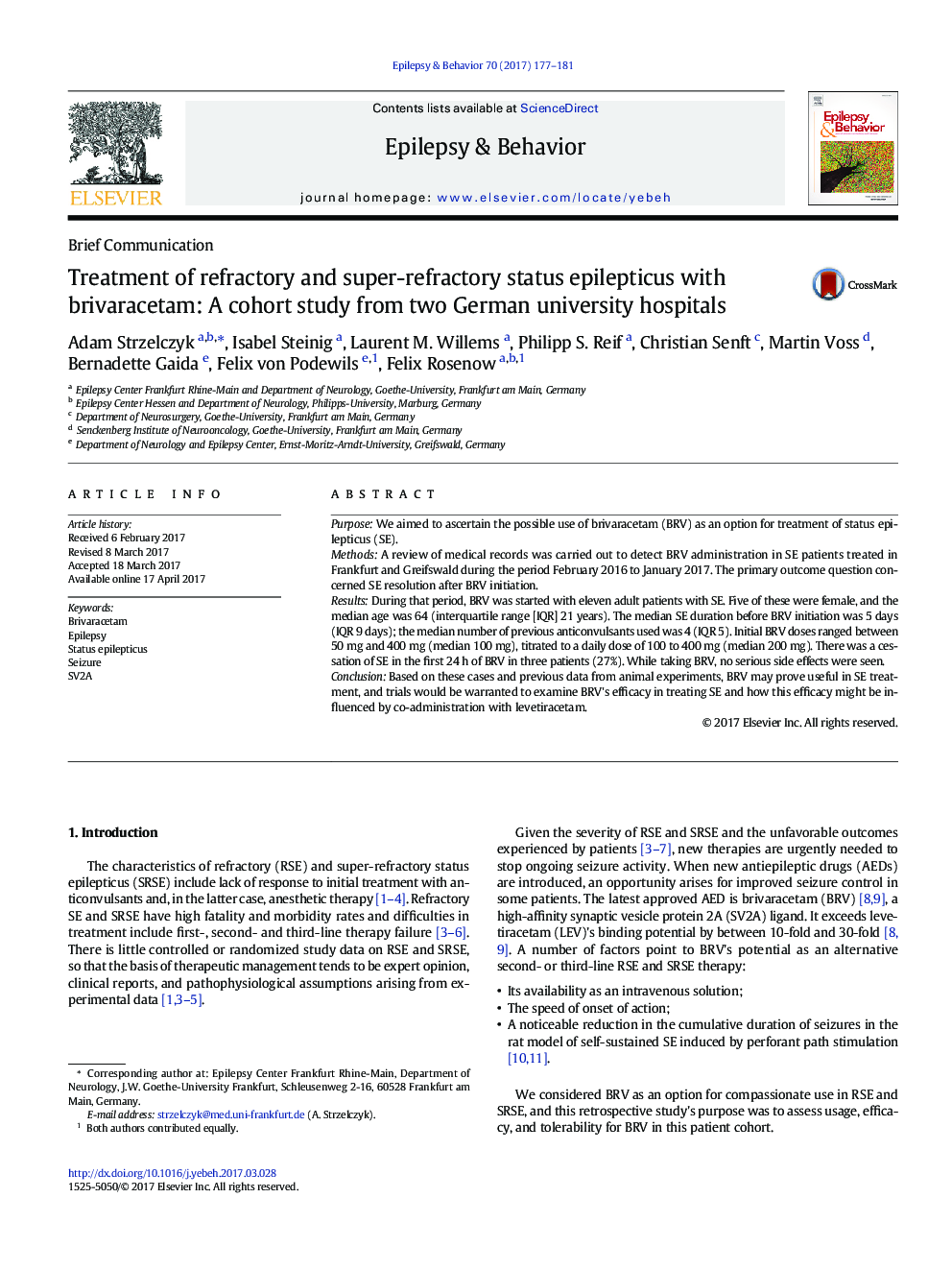| Article ID | Journal | Published Year | Pages | File Type |
|---|---|---|---|---|
| 5628315 | Epilepsy & Behavior | 2017 | 5 Pages |
â¢Use of brivaracetam in refractory and super-refractory status epilepticusâ¢Initial doses ranging from 50 to 400 mg given to 11 adult patientsâ¢Status epilepticus ceased within 24 h in 27% (3 cases)â¢Adverse brivaracetam-related events were not observed.
PurposeWe aimed to ascertain the possible use of brivaracetam (BRV) as an option for treatment of status epilepticus (SE).MethodsA review of medical records was carried out to detect BRV administration in SE patients treated in Frankfurt and Greifswald during the period February 2016 to January 2017. The primary outcome question concerned SE resolution after BRV initiation.ResultsDuring that period, BRV was started with eleven adult patients with SE. Five of these were female, and the median age was 64 (interquartile range [IQR] 21Â years). The median SE duration before BRV initiation was 5Â days (IQR 9Â days); the median number of previous anticonvulsants used was 4 (IQR 5). Initial BRV doses ranged between 50Â mg and 400Â mg (median 100Â mg), titrated to a daily dose of 100 to 400Â mg (median 200Â mg). There was a cessation of SE in the first 24Â h of BRV in three patients (27%). While taking BRV, no serious side effects were seen.ConclusionBased on these cases and previous data from animal experiments, BRV may prove useful in SE treatment, and trials would be warranted to examine BRV's efficacy in treating SE and how this efficacy might be influenced by co-administration with levetiracetam.
